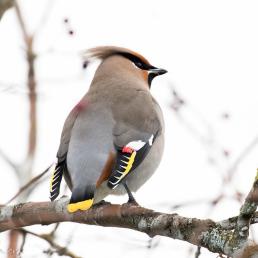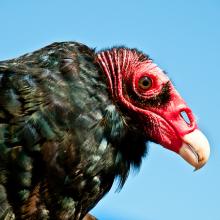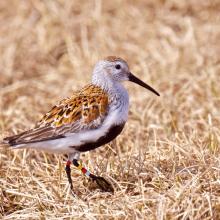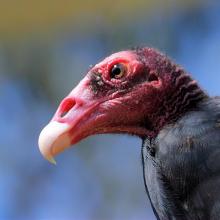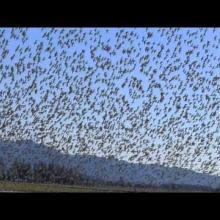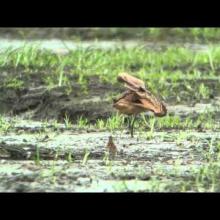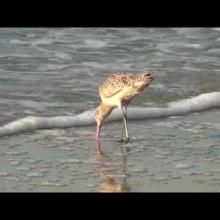

Join BirdNote tomorrow, November 30th!
Illustrator David Sibley and actor H. Jon Benjamin will face off in the bird illustration battle of the century during BirdNote's Year-end Celebration and Auction!
I have been asked how birds that feed by probing in mud locate their food – Which of their senses are they using?
They are using the exact sense you would use, whether probing with your fingers or your nose – the sense of touch. Most of the birds that probe in mud for prey are sandpipers, varying from Least Sandpipers that penetrate the mud only a half-inch to big Marbled Godwits that plunge their bills five inches into the gooey substrate. In Marbled Godwits, a dirty face is commonplace.

Sandpipers have sensitive bills. The area near the tip features a series of little pits, visible on a bird in the hand. Below the pits are structures called Herbst corpuscles, made of onion-like layers of sheathing sensitive to pressure changes that are transmitted to the brain by the nerve fibers enclosed within. These same organs are also found in the tongues of woodpeckers, at the base of flycatcher rictal bristles, and even at the wing joints of birds, where they send feedback to the bird about its wing positions.
Even while probing swiftly, a sandpiper's bill tip can feel the wiggle of a worm or the twitch of an amphipod, apparently even the contraction of a snail (how else would it avoid swallowing snail-sized rocks?). Their bill anatomy is such that the tip can be opened, snagging the subsurface critter. The bill is then removed from the mud and the head jerked so they prey travels up the bill and down the hatch.
Birds are really very much like us. They use the same senses we do, and, like us, emphasize vision and hearing. Birds are exceptionally sharp-eyed, as they should be to find their prey, avoid predators, and move through the environment at high speeds without colliding with it. Most birds have acute hearing as well, as they communicate by voice. Owls, many of which locate their prey by sound, have much better directional hearing than we do.
You wouldn't think that a sense of smell would be too useful to fast-moving aerial animals, but Turkey Vultures use it to find their odoriferous "prey," quartering upwind and changing direction as the smell enters one nostril and then the other. Petrels also use it to find their burrows in a big colony; there's no place like home.
- Dennis Paulson
